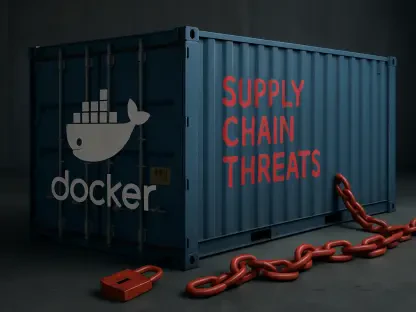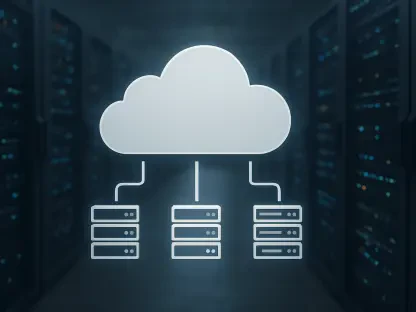Amidst rising consumer prices, enterprise technology costs, especially for Software as a Service (SaaS), have surged at an alarming rate, significantly outpacing overall market inflation. This economic environment has compelled businesses to reassess their technology expenditures closely to mitigate costs while maintaining operational efficiency and cybersecurity integrity.
Rising SaaS Costs and Enterprise Tech Expenditures
SaaS Price Surge Outpaces Market Inflation
Over the past few years, the prices within the SaaS market have inflated at rates significantly above general market inflation. In particular, during November 2022, enterprise tech prices soared at four times the rate of overall market inflation. Such a sharp increase has cornered companies into scrutinizing their SaaS expenditures more critically. It’s a reality that businesses can no longer ignore as cost-efficiency becomes paramount in maintaining competitiveness and financial health.
For example, Webflow saw its leading software prices rise by 23% in 2023 alone, reflecting the broader trend of consistent price hikes. This phenomenon has grown so pervasive that studies from the period indicate that less than half (44%) of businesses’ SaaS applications were regularly used by employees, highlighting substantial underutilization and financial waste within tech stacks. As the costs rise, companies are faced with the dilemma of balancing the undeniable importance of these tools against the inefficiency often embedded within their deployment and usage.
Growth and Adaption in the SaaS Space
Despite the considerable cost increases, SaaS adoption rates have continued to climb, emphasizing the critical role these tools play in modern business operations. By the end of 2024, nearly 73% of SaaS vendors had hiked their prices by an average of over 12% year-over-year, illustrating the essentiality and demand for these solutions. This scenario paints a picture of an enterprise sector caught between the need for technological advancement and the reality of climbing operational expenses.
However, this paradox of high costs coupled with indispensable use drives businesses to constantly reassess and optimize their technology stacks, balancing necessity against budget constraints. As the prices swell, companies have sought to streamline processes and reduce expenditures without compromising on the tools that drive productivity and innovation. It becomes an exercise in precision, where every dollar and every application must justify its place within the technological ecosystem of the company.
Economic Re-evaluation and Downsizing of Tech Portfolios
Streamlining SaaS Investments
The rapid increase in SaaS costs, combined with widespread underutilization, led to a significant shift—a movement dubbed as “stack streamlining” or “trimming the tech fat.” By the end of 2023, many organizations had reduced the size of their SaaS portfolios by over 10% year-over-year, signifying a noteworthy reevaluation of their technology investments. Businesses implemented tighter controls and more rigorous audits, seeking to identify redundant or underused applications. This strategic realignment aimed at eliminating waste and ensuring that every dollar spent on technology yielded maximum value and efficiency.
Organizations have increasingly recognized the need for a leaner, more focused technology stack that delivers real value. This transformation involves a painstaking review of each SaaS subscription to determine its utility and effectiveness. Companies are not just trimming the fat but also renegotiating contracts and seeking better deals. Such moves are emblematic of a broader push towards fiscal responsibility in an era where every expense is scrutinized and benchmarked against potential returns.
Impact of Economic Pressures
Economic constraints have pressed organizations to be more judicious with technology spending. Even while cutting down on certain expenses, businesses acknowledge the necessity of remaining agile and competitive through thoughtful, strategic investments in technology. The economic pressure does not merely push for cuts—it demands smarter spending and more insightful deployment of resources. Stakeholders are increasingly adopting a proactive approach, leveraging technology audits to make informed decisions about retaining, renegotiating, or discarding SaaS subscriptions.
This recalibration is essential in a market landscape fraught with volatility. Companies are learning to operate within tighter margins while still pursuing innovation. This process involves not only technology audits but also fostering a culture of continuous improvement and technological adaptation. As a result, organizations become more resilient, better positioned to weather economic downturns while maintaining their competitive edge and operational efficiency.
Crucial Focus on Cybersecurity
Cybersecurity: The Untouched Investment
While businesses streamline their SaaS portfolios, cybersecurity spending remains a critical and largely untouched area. With cyber threats growing in complexity and frequency, companies realize the catastrophic impact of cybersecurity breaches on financial stability and reputation. The rise in advanced phishing techniques, business email compromise (BEC), and sophisticated social engineering attacks highlights the importance of robust cybersecurity frameworks. Generative AI and deepfakes have further exacerbated the threat landscape, necessitating increased vigilance and proactive defense measures.
Falling victim to a cyber attack can be devastating for any organization, not only in terms of immediate financial loss but also in terms of long-term reputational damage and loss of customer trust. Hence, businesses must prioritize cybersecurity as an integral part of their strategic planning. Investment in cutting-edge cybersecurity solutions is non-negotiable; in fact, it is essential for safeguarding the integrity and continuity of business operations.
Splunk Survey Insights
According to a survey by Splunk in 2024, approximately 32% of respondents expressed concerns about AI-optimized attacks, including more realistic phishing emails and refined malicious scripts. The ability of generative AI to enable less skilled hackers to launch potent social engineering attacks has intensified the pressures on cybersecurity professionals. As the threat landscape evolves, the argument for sustained or even increased cybersecurity budgets becomes stronger. Interestingly, despite budget tightening in other areas, the cybersecurity sector continues to argue for strategic investments.
Security experts warn that the stakes have never been higher. Organizations must stay ahead of threat actors who exploit AI for malicious purposes. Surveys like the one conducted by Splunk serve as a sobering reminder that complacency is not an option. The narrative confirms that security must remain a top priority, and modern threats require modern solutions. In other words, cutting corners on cybersecurity could prove more costly in the long run than the steep SaaS bills companies aim to reduce.
AI and Cybersecurity: A Balancing Act
AI as a Double-Edged Sword
AI’s role in cybersecurity presents a double-edged scenario. While AI can significantly bolster defensive capabilities, it also equips attackers with sophisticated tools for launching advanced threats. The 2024 Splunk report revealed a split among security professionals: with 43% optimistic about AI enhancing defenses, and 45% apprehensive about AI aiding attackers. This dichotomy highlights the complex nature of AI’s influence on cybersecurity. Businesses must navigate these waters carefully, leveraging AI to enhance their defense mechanisms while staying ahead of AI-driven offensive capabilities.
The duality of AI in cybersecurity means firms must be vigilant and strategic in adopting these technologies. Incorporating AI into a defensive strategy doesn’t just involve adopting new tools but also understanding the evolving methodologies of cyber threats. Businesses need to adopt a balanced approach where optimism about AI’s potential is tempered by a realistic assessment of its risks. This nuanced view allows organizations to use AI advantageously while preparing for the potential offensive capabilities AI might arm their adversaries with.
Leveraging AI for Defense
Forward-thinking companies are already exploring AI applications to boost their cybersecurity frameworks. AI’s ability to detect anomalies, predict potential threats, and automate repetitive tasks can provide substantial strategic advantages in defending against increasingly sophisticated cyber attacks. Embracing AI-driven defensive solutions is not just about adding another layer of security; it’s about fundamentally transforming the approach to cyber defense, making it more adaptive, scalable, and responsive to emerging threats.
Leveraging AI effectively involves investing not only in technology but also in human expertise. Cybersecurity professionals must keep pace with advances in AI and continually refine their skills. Collaboration between technological and human defenses results in a robust, multi-layered cybersecurity strategy that can anticipate, identify, and neutralize threats before they cause harm. This approach means that protective measures become more proactive rather than reactive, efficiently preventing breaches and safeguarding crucial business assets.
Strategic Recommendations for Businesses
Conduct Thorough Tech Audits
To manage soaring SaaS costs effectively, businesses should initiate comprehensive technology audits. These audits help in identifying underutilized or redundant applications, allowing firms to eliminate waste and optimize their tech spend. The insights gained from audits enable more informed decisions about which tools offer real value and which ones can be discarded without impacting productivity. Regular audits ensure that technology investments align with current business needs and strategic goals, thereby maintaining an optimal balance between costs and benefits.
When conducting audits, companies must look beyond simple usage statistics and delve into the qualitative aspects of software efficacy. This means evaluating how each application contributes to broader business objectives and employee productivity. Furthermore, renegotiating vendor contracts based on audit findings can lead to more favorable terms and better ROI. Regular audits and subsequent strategic adjustments help businesses stay agile, ensure cost-effectiveness, and strengthen their technological framework amidst shifting economic conditions.
Prioritize Cybersecurity Investments
Even amidst budget constraints, businesses must prioritize cybersecurity investments. Protecting against increasingly sophisticated threats requires adopting the latest countermeasures, which may include AI-driven defense solutions and comprehensive threat detection systems. Freezing budgets in this area could prove detrimental, given the rapid evolution of cyber threats. Legacy security solutions may fail against modern, AI-driven threats, making it essential to continuously upgrade and adapt cybersecurity defenses.
By maintaining a focus on cybersecurity, companies can mitigate the risks associated with cyber attacks, ensuring operational stability and protecting sensitive data. Investments in cybersecurity should be seen as an essential defense mechanism, akin to an insurance policy—mandatory and indispensable. Clear communication with stakeholders about the importance of these investments and the potential risks of underfunding cybersecurity can facilitate the allocation of adequate resources to this critical area.
Leverage AI for Defense
Businesses should implement AI-driven technologies to enhance their cybersecurity posture. AI’s ability to analyze vast amounts of data quickly and accurately helps in identifying potential threats and reacting in real-time. This increased efficiency in detecting and mitigating threats strengthens overall security frameworks. Additionally, integrating AI into cybersecurity strategies can free up human resources, allowing cybersecurity teams to focus on more complex tasks.
Utilizing AI for cybersecurity also involves continuous learning and updating of AI algorithms to stay ahead of evolving threats. Companies should invest in robust AI systems capable of adapting to new attack vectors and improving their defensive capabilities continually. By embracing AI, businesses can create a dynamic and responsive cybersecurity environment that not only protects against current threats but also anticipates future risks, ensuring robust defense mechanisms.
Conclusion
With consumer prices on the rise, the cost of enterprise technology, particularly Software as a Service (SaaS), has skyrocketed, far outstripping the rate of overall market inflation. This steep increase in technology expenses has forced businesses to take a hard look at their budgets and find ways to reduce costs without sacrificing efficiency or cybersecurity.
In this challenging economic climate, companies are looking for strategies to balance their technological needs with their financial constraints. One approach is to conduct comprehensive audits of existing software subscriptions to identify unused or underutilized services that can be eliminated. Another tactic involves negotiating better terms with current providers or exploring alternative solutions that offer comparable features at a lower price.
Additionally, businesses are increasingly investing in training programs to ensure that their employees are proficient in using the tools and platforms available to them, thereby maximizing productivity and minimizing the need for additional software purchases. Cybersecurity remains a top priority, and organizations are allocating resources to strengthen their defenses against potential threats, recognizing that a security breach could result in far greater costs than the price of preventive measures.
Overall, the sharp rise in enterprise technology costs has become a significant challenge for businesses striving to maintain their competitive edge. By carefully reassessing their expenditures and implementing cost-saving measures, companies can navigate this economic landscape more effectively while continuing to innovate and grow.









